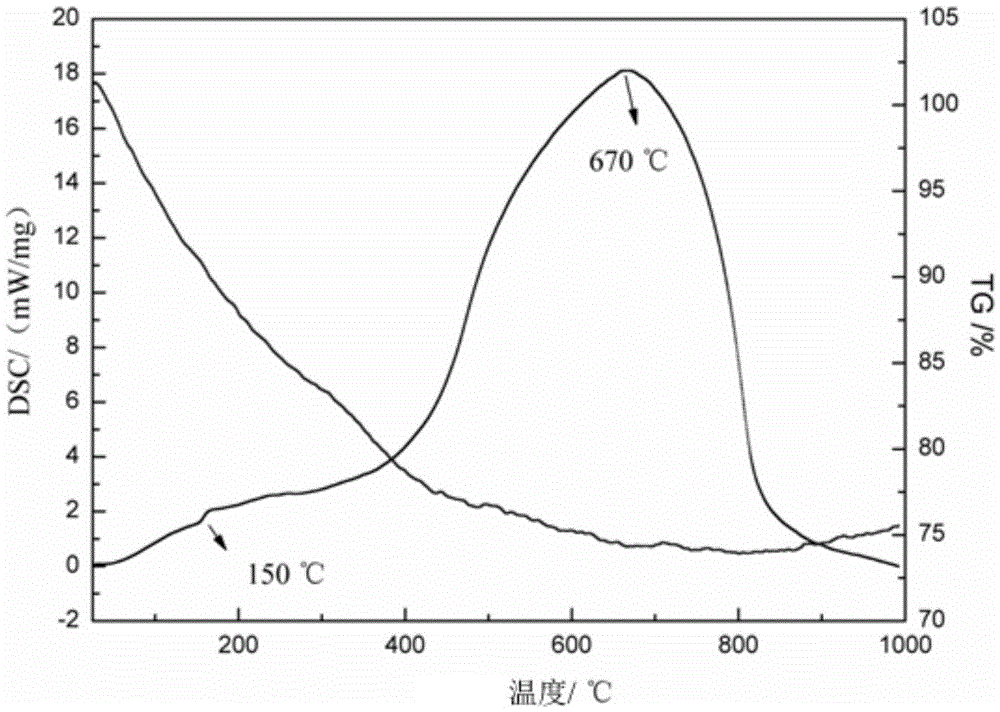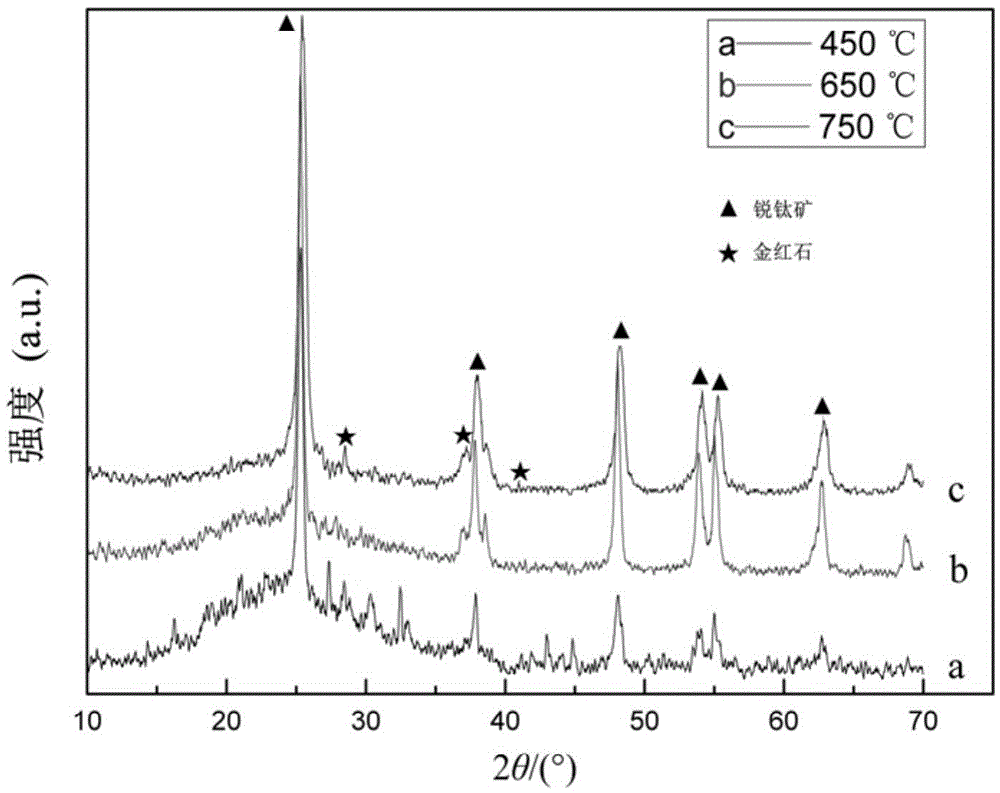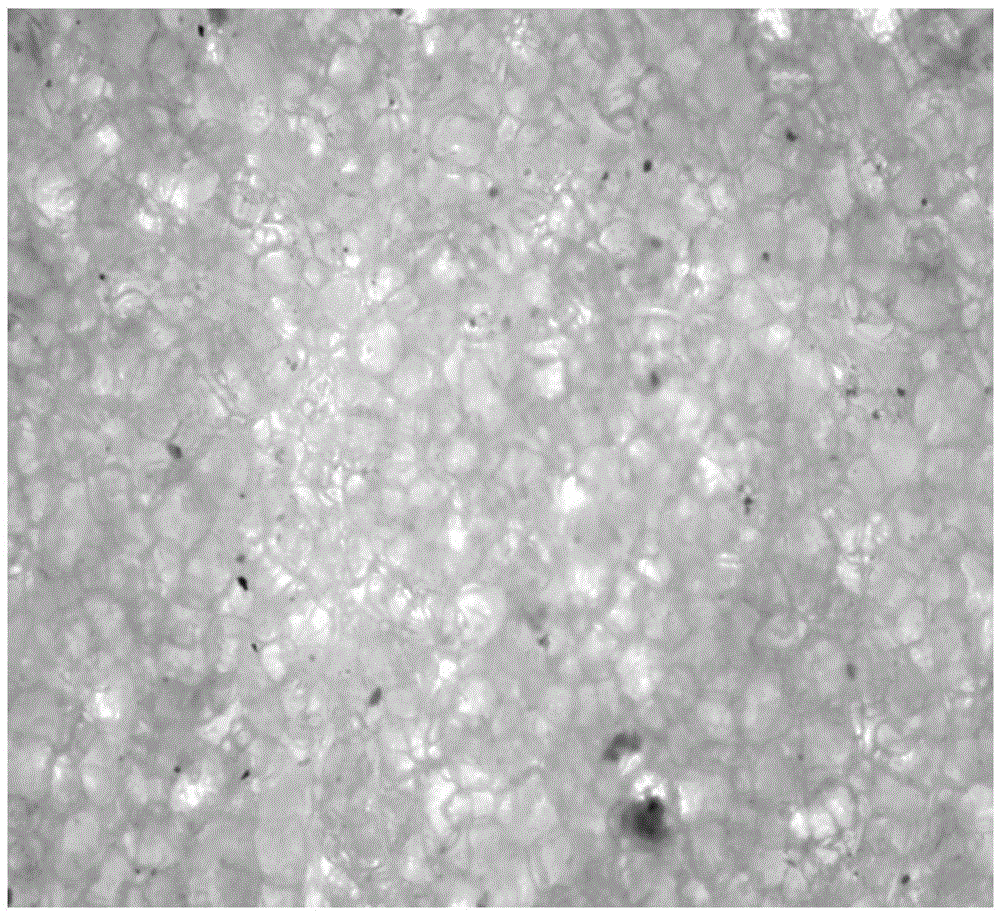A kind of preparation method of opalescent glass coating with photocatalytic performance
An opalescent glass and photocatalytic technology, which is applied in the field of decorative glass, can solve the problems of weak carrier bonding, difficult to grasp and control the loading amount, and difficult to quantitatively control, etc. The effect of adsorption properties
- Summary
- Abstract
- Description
- Claims
- Application Information
AI Technical Summary
Problems solved by technology
Method used
Image
Examples
Embodiment 1
[0028] 1) Weigh an appropriate amount of Ti(SO 4 ) 2 Chemical reagents, use deionized water to prepare A solution with a concentration of 0.1mol / L; prepare a dilute sulfuric acid solution with a concentration of 0.5mol / L, and prepare according to H 2 SO 4The molar ratio to HF is 10:1, add concentrated hydrofluoric acid to dilute sulfuric acid, mix well, and form mixed acid B liquid;
[0029] 2) Slowly add solution A to industrial water glass aqueous solution with M=2.5 under constant temperature stirring at 45°C, then add mixed acid solution B to adjust the pH value to 6.5, continue to stir for 30 minutes, and stand for 4 hours to obtain SiO 2 -TiO 2 Sol C liquid; Wherein, the mol ratio of the Si in the water glass aqueous solution and the Ti in the A solution is 1:0.7;
[0030] 3) The surface of the glass substrate was ultrasonically cleaned with deionized water and dried, and then cleaned with SnCl 2 solution for sensitization; then SiO 2 -TiO 2 The sol C solution is ...
Embodiment 2
[0041] 1) Weigh an appropriate amount of Ti(SO 4 ) 2 Chemical reagents, use deionized water to prepare A solution with a concentration of 0.2mol / L; prepare a dilute sulfuric acid solution with a concentration of 0.6mol / L, and prepare according to H 2 SO 4 The molar ratio to HF is 11:1, add concentrated hydrofluoric acid to dilute sulfuric acid, mix well, and form mixed acid B liquid;
[0042] 2) Slowly add solution A to industrial water glass aqueous solution with M=2.0 under constant temperature stirring at 50°C, then add mixed acid solution B to adjust the pH value to 6.3, continue to stir for 25 minutes, and stand for 3 hours to obtain SiO 2 -TiO 2 Sol C liquid; Wherein, the mol ratio of the Si in the water glass aqueous solution and the Ti in the A solution is 1:0.5;
[0043] 3) The surface of the glass substrate was ultrasonically cleaned with deionized water and dried, and then cleaned with SnCl 2 solution for sensitization; then SiO 2 -TiO 2 The sol C solution is...
Embodiment 3
[0046] 1) Weigh an appropriate amount of Ti(SO 4 ) 2 Chemical reagents, use deionized water to prepare A solution with a concentration of 0.15mol / L; prepare a dilute sulfuric acid solution with a concentration of 0.4mol / L, and follow the H 2 SO 4 The molar ratio to HF is 9:1, add concentrated hydrofluoric acid to dilute sulfuric acid, mix well, and form mixed acid B liquid;
[0047] 2) Slowly add solution A to industrial water glass aqueous solution with M=2.5 under constant temperature stirring at 40°C, then add mixed acid solution B to adjust the pH value to 6.0, continue to stir for 20 minutes, and stand for 2 hours to obtain SiO 2 -TiO 2 Sol C liquid; Wherein, the mol ratio of the Si in the water glass aqueous solution and the Ti in the A solution is 1:0.3;
[0048] 3) The surface of the glass substrate was ultrasonically cleaned with deionized water and dried, and then cleaned with SnCl 2 solution for sensitization; then SiO 2 -TiO 2 The sol C solution is sprayed a...
PUM
| Property | Measurement | Unit |
|---|---|---|
| modulus | aaaaa | aaaaa |
Abstract
Description
Claims
Application Information
 Login to View More
Login to View More - R&D Engineer
- R&D Manager
- IP Professional
- Industry Leading Data Capabilities
- Powerful AI technology
- Patent DNA Extraction
Browse by: Latest US Patents, China's latest patents, Technical Efficacy Thesaurus, Application Domain, Technology Topic, Popular Technical Reports.
© 2024 PatSnap. All rights reserved.Legal|Privacy policy|Modern Slavery Act Transparency Statement|Sitemap|About US| Contact US: help@patsnap.com










